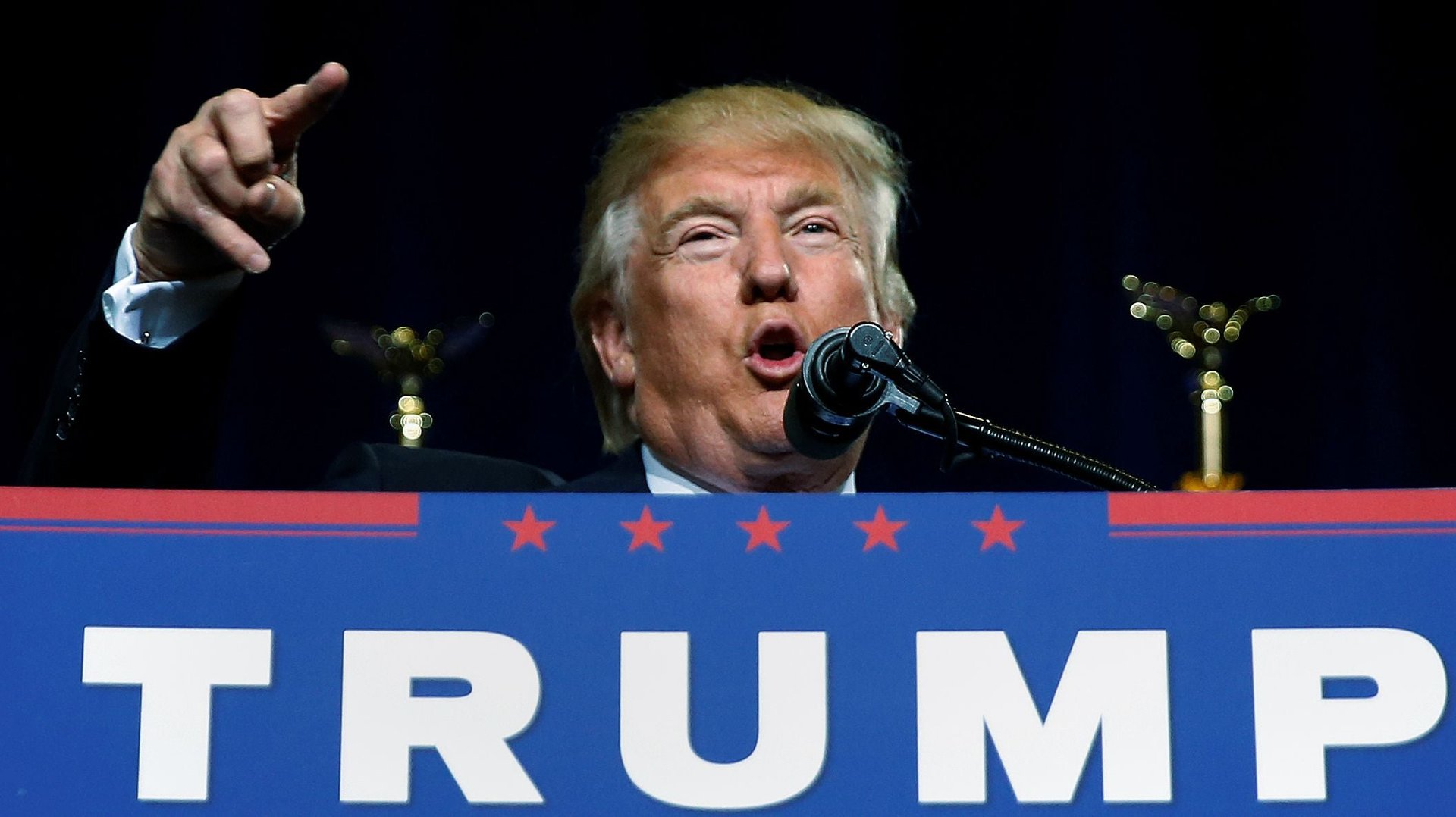Donald Trump finally explained his immigration plan, and it’s all about protecting white power
Donald Trump’s big plan to make America great again, it turns out, is simply to keep America white. And the key to doing that is through a radical reworking of immigration policy, as Trump made clear in a speech in Arizona last night.


Donald Trump’s big plan to make America great again, it turns out, is simply to keep America white. And the key to doing that is through a radical reworking of immigration policy, as Trump made clear in a speech in Arizona last night.
After a week of carefully staged drama about “softening” and pivots, Trump declared unequivocally that fighting immigration—or more accurately, unauthorized immigration—is both his campaign’s crusade and the panacea to America’s worst ills.
“Right now… we’re in the middle of a jobs crisis, a border crisis and a terrorism crisis like never before. All energies of the federal government and the legislative process must now be focused on immigration security,” said Trump (here’s a transcript of the speech). “That is the only conversation we should be having at this time, immigration security. Cut it off.”
Stagnant wages, unemployment, terrorism, crime, skyrocketing debt—all can be fixed simply by expelling unauthorized immigrants, said Trump. For the first time in his campaign, Trump detailed a litany of policies to tell the world how he’ll do that. His ideas won’t work; in fact, they would be disastrous for an economy whose white working population is aging rapidly.
But then, that’s not the point. Trump’s rhetoric isn’t really about immigration at all. He is articulating a worldview held by some conservatives who believe unauthorized immigrants becoming citizens or even staying in the US will result in the corrosion of white political power.
This fear, which is espoused most prominently by the “alt-right”—the white nationalist conservatives Trump has embraced—is political, too. This group worries that immigration has put in motion a vicious cycle that will dilute Republican voting clout, turning states like Florida and Colorado—and even GOP strongholds Texas and Arizona—Democratic. Last night, Trump promised his supporters he would not only stop immigration, but freeze the political map, keeping the racial and political balance from shifting brown and blue.
How can you tell? Trump’s policies aren’t about jobs, or safety, but simply getting as many brown people out of the country as quickly as possible.
Today, America’s electorate is turning brown at a clip that’s threatening the predominantly white Republican party. Three decades ago, Latinos made up only 5% of the electorate; by 2012, that share had doubled. In Arizona, for instance, Democratic activists are galvanizing Latino voters, putting Arizona in play for Clinton. Republican leaders are divided over what to do about this.
Some, like former governors Mitt Romney and Jeb Bush, or senator John McCain (who Trump’s crowd last night booed, incidentally) want to make the GOP platform more appealing to Latinos and other ethnic minorities by finding some kind of immigration middle-ground. Florida senator Marco Rubio’s political campaign was premised on this, until he was Trumped.
Others, like Alabama senator Jeff Sessions, want what Trump wants: to step up deportations, limit legal immigration, and prevent the children of unauthorized immigrants from becoming citizens. In fact, Trump’s policies hail directly from Sessions’ 2015 paper titled “Immigration Handbook for the New Republican Majority” (pdf).
What’s unspoken by Trump and these politicians, but is widely accepted in conservative media and comments sections, is that this will prevent the brisk pace of browning from threatening Republicans’ hold on power. The immigration plan Trump spelled out last night will preserve GOP dominance in a few ways.
Last week, Trump waffled on the idea of giving some undocumented immigrants legal status or a path to citizenship, saying he wanted to “work with” the “terrific” ones. However, his announced plan is that all unauthorized immigrants will have to return to the country from where they—or their parents, or grandparents—came. Yep, all 11 million of them (though Trump exaggerated that count to 30 million).
To pull this off, Trump called for the creation of a huge deportation apparatus. More than 6 million immigrants could be slated for immediate expulsion, reports the Washington Post. Should they wish to return, deported immigrants then must wait in line behind all their countrymen applying for visas—currently, a 20 year-long line.
Trump also rejected the idea of protecting minors brought to the US by their parents, many of whom only speak English and wind up in countries and cultures they hardly know when deported.
Then, there’s Trump’s plan to limit the number of immigrants as a share of the population to “historical trends,” a throwback to before 1965, when US immigration policy aimed to maintain a certain racial mix.
Throughout all of this, Trump reiterated his chilling, inaccurate vision of an America whose every street corner is under attack by “criminal aliens.” If implemented, Trump’s plan will stall the pace at which immigrants turn into voters. The immigrant population is largely brown and highly inclined to vote Democrat. It will also shrink the populations of cities.
Since unauthorized immigrants and their children—most of whom are counted in the population census on which political representation is based—tend to live in liberal-leaning areas, evicting them all will shift the relative balance of voting clout in favor of less populated suburban and rural areas, which tend to be white and skew Republican.
Of course, Trump didn’t say that locking in a white, Republican majority is the goal here. But he didn’t have to. The purpose of his immigration policy is to reinforce the specious notion that all immigrants are “criminal aliens.” Trump’s rhetoric wraps his supporters’ fear of a browning America in a mantle of honor and civic duty, inviting them to use the word “great” when what they really mean is “white.”